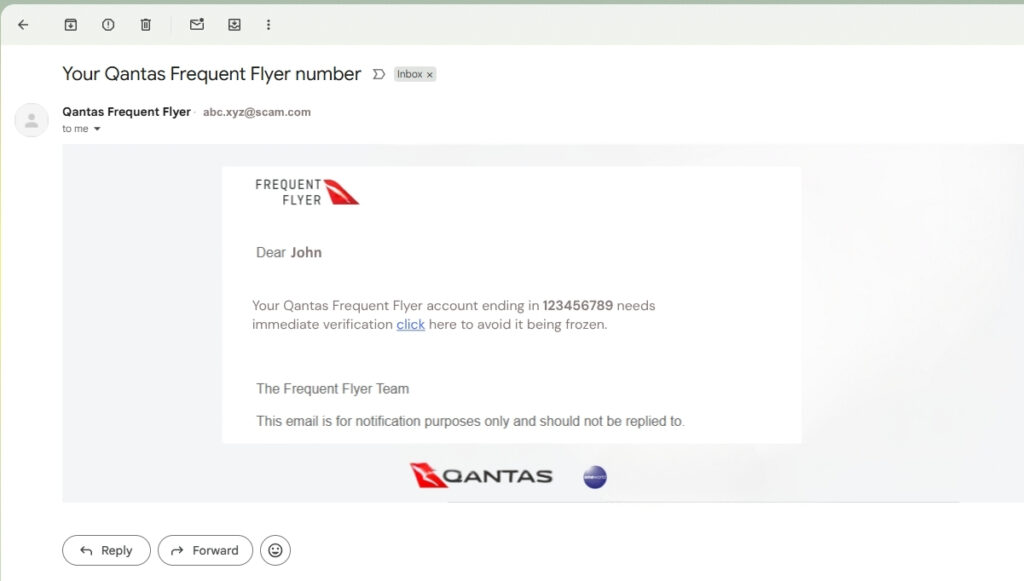Qantas Cyber-Attack 2025: What Went Wrong, Who’s Affected, and Key Lessons for Keeping Your Data Safe
In the whirlwind world of aviation and online security, nothing grabs attention quite like a big cyber-attack on a well-known brand. Qantas, Australia’s beloved national airline, has just confirmed a major cyber incident that could have exposed personal details of up to six million customers. This Qantas data breach has got everyone talking about risks from third-party suppliers, protecting customer information, and how big companies handle new cyber threats.
If you’re a Qantas Frequent Flyer or just worried about cybersecurity, you’ve come to the right spot. In this post, we’ll unpack what actually happened in the Qantas cyber-attack, who’s been hit, what data got out, and crucially the lessons we can all learn to stay secure. Whether you’re fending off phishing emails, dealing with supplier vulnerabilities, or dodging ransomware, the takeaways from this Qantas saga could make a real difference.
Stick with me as we dig into this eye-opening cybersecurity alert and share some practical advice to help you protect yourself.
What Actually Happened in the Qantas Cyber-Attack?
The trouble started when Qantas spotted dodgy activity on a third-party platform run by an overseas contact centre in Manila, the Philippines. This system, which supports customer service, was breached by an unauthorised group of hackers showing signs of the infamous Scattered Spider crew known for pulling off some high-profile hacks around the globe.
Qantas didn’t hang about; they jumped into action to contain the breach. They cut off the affected system, brought in cybersecurity specialists, and teamed up with the Australian Cyber Security Centre (ACSC), the Office of the Australian Information Commissioner (OAIC), and the police. This quick response stopped things from turning into a nasty ransomware situation or spreading further into their network.
But how did a supplier’s weakness lead to such a big data breach? It’s a classic example of how even top-notch internal security can be undone by a chink in the chain. Have you checked your own suppliers recently? The Qantas cyber-attack is a sharp nudge that threats like Scattered Spider will pounce on any opening they find.
What Customer Data Got Exposed in the Qantas Breach?
Luckily, the Qantas cyber-attack didn’t touch any financial stuff, but the leaked info is still prime material for crooks. Qantas has said the following non-sensitive personal details might have been accessed:
- Full names
- Email addresses
- Phone numbers
- Dates of birth
- Frequent Flyer numbers
It’s a relief that no passwords, credit card info, passports, or PINs were involved. That said, even this everyday data can be a goldmine for hackers. Picture getting a phishing email that seems spot-on:

This sort of trickery is booming, with Australia’s cybersecurity reports showing a 25% jump in data breaches in 2024. The Qantas case really drives home why every bit of personal info counts in the battle against identity theft and loyalty scheme scams.
Why the Qantas Cyber Incident Is a Big Deal for Australian Cybersecurity
Looking beyond the immediate mess, the Qantas data breach highlights wider worries in Australia’s cybersecurity scene. With phishing and ransomware on the rise, this event puts the spotlight on third-party risks—the idea that your security is only as good as your weakest link.
For customers, the dangers include:
- Phishing and Trickery: Hackers could pretend to be Qantas to snag more private details.
- Loyalty Scams: Someone could sneak into your Frequent Flyer points and cash them in without you knowing.
- Building Blocks for Identity Theft: Mixed with data from other leaks, this info helps crooks piece together a fuller picture.
On a bigger scale, it’s a wake-up call. Australia’s data breach numbers paint a grim picture, with sectors like aviation, healthcare, and retail under increasing fire. If a powerhouse like Qantas can get caught out, what about smaller outfits? It’s high time to rethink how we protect data and get ahead with cybersecurity.
What do you reckon has something like this hit you or your business? Drop a comment below!
How Qantas Handled the Cyber-Attack: A Lesson in Openness
Qantas deserves credit for acting quickly. Immediately isolating the affected Fair play to Qantas, their response was spot on and professional. Here's what they did:
Afterwards, Qantas said they’re beefing up checks on third-party systems, with tougher audits and security rules. This smart move not only limited the damage but also helped restore faith showing that acting fast and being upfront is vital in a cybersecurity crisis.
The airline also confirmed it is tightening controls and enhancing oversight of its third-party platforms, a move security professionals have been advocating for years.
The Wider View: Growing Cyber Threats and Supplier Risks in Australia
The Qantas cyber-attack isn’t a one-off. Australia’s cybersecurity world is facing a barrage, with a 25% rise in data breaches last year, thanks to phishing, ransomware, and attacks via suppliers. Outfits like Scattered Spider thrive on these weak spots, turning partner platforms into entry points for trouble.
It mirrors what’s happening worldwide: from the MGM Resorts breach to homegrown Australian incidents, third-party risks are the soft underbelly of modern businesses. Companies need to ask: Are your suppliers up to scratch with standards like ISO 27001? Do your emergency plans cover outsiders?
For some context, here are a few startling stats:
- More than 60% of data breaches involve third-party suppliers (from cybersecurity reports).
- Phishing is still the main culprit, making up 36% of incidents in Australia.
- It’s obvious cybersecurity isn’t just for the IT team; it’s essential for the whole business.
What Can You Do?
If you're a Qantas customer (especially a Frequent Flyer member), here’s what we recommend:
- Be wary of emails or SMS messages impersonating Qantas.
- Don’t click on suspicious links.
- Monitor your frequent flyer activity for unauthorised use.
- Enable multi-factor authentication (MFA)wherever possible.
- Report phishing attempts to [email protected] or Qantas support.
Lesson for Businesses
Whether you're in aviation, healthcare, or retail, the key takeaway here is:
- Secure your vendors: Regularly audit and assess third-party security controls.
- Segment customer data: Limit access and avoid excessive retention.
- Prepare your response plan: Speed and transparency matter in a crisis.
- Educate your customers: Give them tools to spot fraud attempts early.
Final Thought
Qantas’ cyber-attack is a textbook case of how third-party vulnerabilities can cascade into major data incidents, even for well-resourced and security-conscious organisations. The silver lining? No critical data was lost, and the response was measured, quick, and professional.
Still, it’s a wake-up call for every business. Cybersecurity doesn’t stop at your firewall. It extends to every partner and system that handles your customer data.
Stay safe. Stay vigilant.



